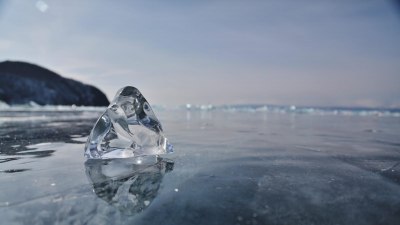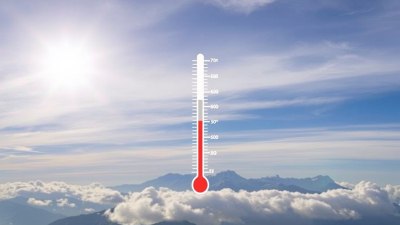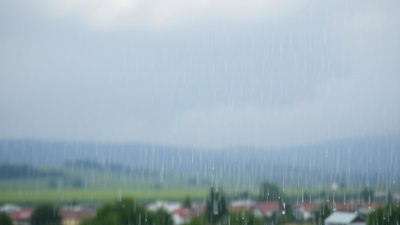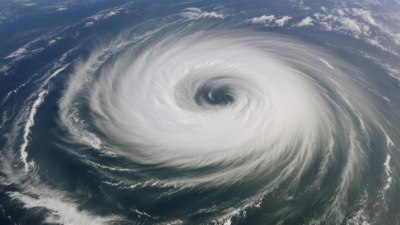The Science Behind Exploding Ice on Lakes
Explore the fascinating phenomenon of exploding ice on lakes, its causes, and scientific explanations.

Exploding ice on lakes may seem like an unusual and dangerous phenomenon, but it is not as rare as one might think. This strange occurrence has fascinated both scientists and laypeople alike. This article delves into the science behind this explosive ice phenomenon, exploring the conditions that lead to its formation, the mechanisms that cause the explosion, and the impact on the surrounding environment.
To understand why ice explodes on lakes, we must first appreciate how ice forms in the first place. When temperatures drop below the freezing point of water (0°C or 32°F), lakes start to freeze. The freezing process begins at the surface, where a thin layer of ice forms. As the temperature continues to drop, the ice thickens. However, several factors can influence how this ice behaves over time.
Factors Leading to Ice Formation
One significant factor that impacts ice formation is the relationship between temperature and water's density. Unlike most liquids, water reaches its maximum density at around 4°C (39°F). As water cools below this temperature, it expands, leading to lower density and causing it to rise to the surface. This unique property results in ice forming on top of lakes rather than sinking.
Once a sufficient layer of ice has formed, changes in temperature can lead to stress within the ice structure. Seasonal fluctuating temperatures often result in thermal expansion and contraction of the ice. Additionally, variations in the underlying water temperature—due to geothermal activity or varying weather conditions—can add to the stress. When the surface temperature of the ice suddenly rises or falls, it can create internal fractures.
Understanding Thermal Stress
This thermal stress can result in cracking of the ice surface, which is one precursor to an explosive event. If the cracks go deep enough, pockets of water can become trapped beneath the ice. Additionally, when air trapped beneath the ice expands due to temperature changes, this can create significant pressure in these pockets. A critical point is reached when the pressure exceeds the structural integrity of the ice, prompting an explosive release.
The Explosion Mechanism
When the ice layer cracks and the pressure releases, several features contribute to the violent explosion of ice. The rapid expansion of water vapor trapped beneath the ice can generate significant forces, leading to the ice breaking and launching large chunks into the air. The sound associated with this explosion is often likened to a gunshot or thunder, which can be startling for those nearby.
Sometimes, this explosive behavior can lead to large surface waves on the lake. These waves occur because the sudden movement of ice displaces the water underneath, creating a ripple effect. If conditions are right, this can lead to cascading events where one piece of ice’s explosion triggers others, resulting in a chain reaction of explosions.
Environmental Impact of Exploding Ice
The environmental impact of exploding ice on lakes can be significant. On smaller lakes, these explosions can disrupt the surrounding ecosystem, affecting fish habitats or even shoreline plant life. The displacement of water can stir sediments on the lake floor, impacting water quality and clarity.
Interestingly, the study of ice explosions contributes valuable information to climate science. Understanding how ice behaves under stress can help scientists assess ecological impacts resulting from climate change. As average temperatures rise, the frequency and intensity of ice formations can shift, altering local environments significantly.
Safety Precautions
Given the unpredictable nature of exploding ice, it is essential for people to take safety precautions when venturing out onto frozen lakes. Experts recommend being aware of changing weather conditions and avoiding areas that may show signs of structural weakness such as cracks or bulges. Ice thickness can vary widely, and what might be safe in one place could be dangerous just a few feet away.
For local outdoor activities such as ice fishing, skating, or snowmobiling, it’s wise to check local guidelines and consult experienced ice users to ensure safety. Community awareness about the phenomena of ice explosions also fosters respect for nature and the inherent risks associated with winter outdoor activities.
Conclusion
In conclusion, the science behind exploding ice on lakes is a fascinating interplay of temperature, pressure, and environmental dynamics. This phenomenon highlights the complexity of natural processes and encourages a deeper appreciation for the wonders of winter landscapes. It also serves as a reminder to remain vigilant while enjoying the beauty of ice-covered lakes and to respect the forces of nature that govern such phenomena.
Understanding the factors behind ice explosions not only piques scientific curiosity but also informs safety measures and environmental conservation efforts. As long as winter brings freezing temperatures, the science of exploding ice will remain an intriguing subject worthy of exploration.











